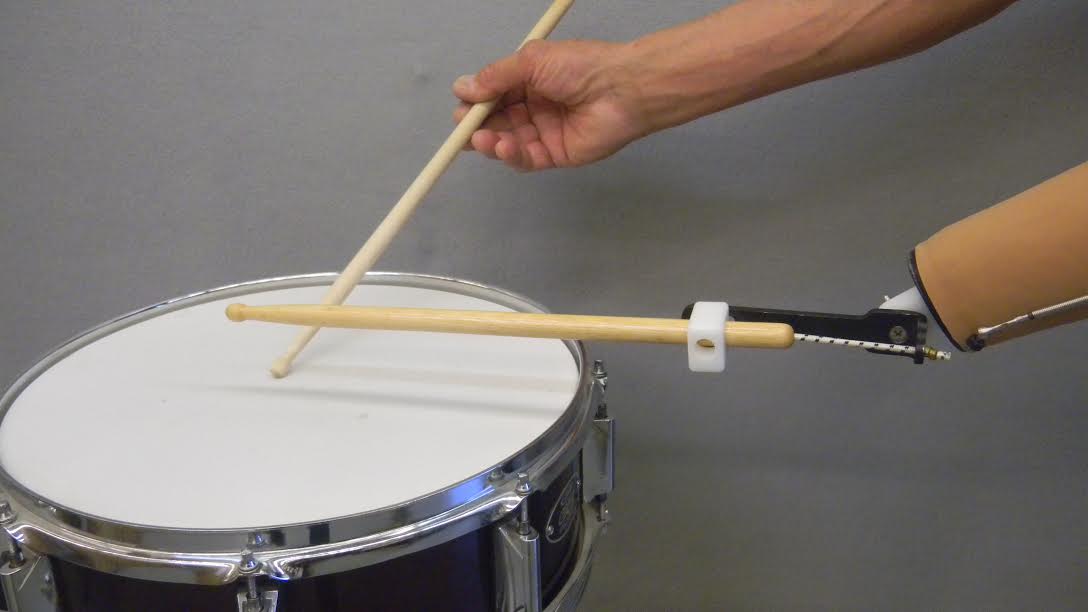Wrist turns down, the range of motion is impeded by the drum-head. Thus, the starting position, which Wilson referred to as the “floor,” is 1/2' to 1' off the head, with the bead and butt ends of the stick parallel to the playing surface. Although there are multiple ways to turn the wrist, Spivack and Wilson taught. Advanced Rudiment Technique - Some Simple Rudiments at Much Higher Speeds! SECTION 4 - THE DRUM KIT Setting Up a Drum Kit for More Speed & Control. Efficient Movement Around The Drums -Positioning the arms -70.Linear Movement VS Independence.Sticking Patterns & Rudiments. Technique for the Feet. Modern Drummer Magazine Current Issue.
Developing and mastering The Four Basic Strokes, that is Full, Down, Tap and Up, is an essential ingredient to playing relaxed, developing speed, and playing hand-to-hand accent patterns. The reason I reference these strokes with the Moeller Method is because they are the cornerstones to Moeller technique. The Four Basic Strokes can be used with numerous other techniques, such as the Gladstone/Free-Stroke, simply because the concept behind these strokes is to work with the natural rebound and pre-stroke placement of the drumstick.
There are other stroke types and names out there. For example, some say that the Full Stroke is only played using the highest position; half that height is called a Half Stroke, and lower to the drum is a Low Stroke. While I agree with the terms, I consider all three of these strokes (Full/Half/Low) to be types of Full Strokes; the Half and Low strokes are just subcategories of the Full Stroke. Why? Because the motion of the Full, Half, Low Strokes are essentially the same, but at different stick heights. It is for this reason that I say you can play a Full Stroke at different heights. Stick height, along with velocity, is what controls a stroke's volume and intensity; sounding louder or softer. So if you are going to study the Moeller Method or Gladstone/Free-Stroke, yes, you'll need to learn and use these other strokes/terms. This lesson, however, is on the Four Basic Strokes, the essential building blocks to all drumming, which I believe every drummer and percussionist should learn and master. These same four strokes happen to be foundational strokes for the Moeller and Gladstone techniques.
Please note, I am only demonstrating these strokes slowly. I am controlling the stick and each rebound; actually pulling the stick up so you can see what is going on with the drumstick in each of the four strokes. Once these elementary strokes are understood you should begin to work with the rebound, allowing the stick to rise on its own. You can liken this to dribbling a ball; throw the stick down and allow it to rebound naturally as your hand follows.
Sleeping dogs: definitive edition crack. Subscribers can view/download/printa collection of worksheets written by Jim Chapin which covers more of the Moeller method and technique.
is a degreed professional musician with a Bachelor of Music in Percussion Performance, and Master of Music post-graduate work. His 40+ years in the music and entertainment industry, over 100 album recordings to his credit, as well as an exhaustive understanding of contemporary and classical music makes him a complete and skilled master musician.
Bart continues to work as an active drummer, percussionist, composer, producer, music arranger, director, comedian, MC, educator, writer and visual artist. He is the owner and creator of DrummerCafe.com, which he founded in December of 1996.

Beginning drummers often have questions about how to hold drum sticks. Traditional grip or matched grip, which one is better? Here, Edmond, OK drum instructor Tracy D. explains the mechanics of each drum grip so you can decide which one is right for you…
There are essentially two different ways to hold drum sticks: traditional grip and matched grip. Both techniques are expressive and fun to use. If you’re wondering how to hold drum sticks, first you should get a better understanding of the difference between the two. Download skype meetings app for mac. Lets look at the mechanics behind traditional grip and matched grip.
Matched Grip
With matched grip, both of your hands hold the sticks the same way. This type of grip has three variations: German, American, and French.
For these grips, your thumb should rest opposite of your index finger on the stick, with approximately two inches of the butt-end extending from the back. This pinching between your thumb and index finger is called a “fulcrum.”
French Grip
Drum Stick Technique Pdf Format
The fulcrum rests between your thumb and index finger with the French grip. The fulcrum can (if desired) shift a bit more toward your thumb and middle finger with the German and American grips.
Hold the sticks with your thumbnails facing the ceiling and your palms facing each other. This position allows for maximum finger control, and it’s favored by timpanists for this reason.
German Grip
Hold the sticks with your palms facing down and use the wrists to drive. This position lends power and volume.

American Grip
Turn your hands to a 45-degree angle. This allows you to use both wrists for power and your fingers for control and nuance.
Drum Technique Academy
Traditional Grip

This grip was popularized by members of the military battery, who carried their drums slung to the side (hence the name, “side drum”). The angle of the drum made it necessary to turn the left forearm under, so that the stick would comfortably clear the rim. Traditional grip is often used for jazz and drum lines.
Position your left hand as if you’re extending it to shake someone’s hand. The stick should sit in the webbing between your thumb and index finger, and rest on the cuticle of the ring finger. Approximately 2/3 of the stick should face the front.
Rest the tip of your thumb lightly on the first knuckle of your index finger and put your middle finger on top of the stick, slightly in front of the index finger.
The fulcrum (pivot point) will be between your thumb and index finger. Relax your fingers and use them for support, nuance, and control.
Move your forearm in a rotary motion, which is similar to turning a doorknob. Position your right hand the same way you do for the American matched grip.
It’s important to relax and allow the sticks to float in your hands. Gripping the sticks too hard can lead to fatigue and possible injury, and it will limit the sticks’ mobility. A relaxed grip will also coax a better tone from the drums.
Some like to debate the virtues of their preferred grips, but I don’t think you necessarily have to choose. They each have a different feel, expression, and attitude. For example, matched grip lends itself well to rock, but if the groove is funky, a bit of traditional conveys that feel and attitude quite nicely.
Now you know how to hold drum sticks. Learning both grips will make your playing more versatile and interesting, so I say — give both a try!

Learn more about drum stick grip and drum technique, search here for a private drum instructor near you.
Share this Image On Your Site
Drum Stick Technique Pdf Free
Tracy D. teaches percussion and drum lessons in Edmond, OK, as well as online. She has been playing the drums with various bands for more than 13 years. Tracy earned her Bachelor’s in Music Education from Oklahoma Christian University and has played with the OKC Community Orchestra since 2009. Learn more about Tracy here!
Drum Stick Technique Pdf Template
Photos by Alec Connors, QWEbie
